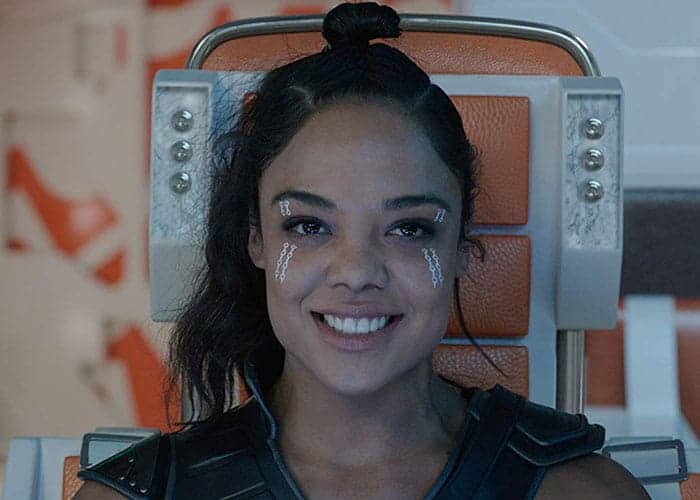
The Inclusion Initiative at USC Annenberg is, quite frankly, doing film buffs a huge favor. Yes, their research into the industry we love so dearly can be deeply unsettling. However, there is no way to sugarcoat the statistics found in their January 2019 report, which was announced at the Sundance Film Festival’s “Making the (In)visible: Radical Transparency in the Data-Driven Age” panel by Dr. Stacy L. Smith.
The Annenberg Inclusion Initiative analyzed 1200 of Hollywood’s biggest movies from 2007 to 2018 to collate the distribution of gender, race, and age among the top-grossing filmmakers of the last 12 years. One of the biggest takeaways from the study is that women across the board — especially women of color — continue to be grossly sidelined in the movie industry. In both above- and below-the-line jobs, the driving forces behind filmmaking as a whole have been largely “male and pale,” per Annenberg.
Despite these disheartening results, Annenberg isn’t simply rehashing an ever-prevalent problem with no inkling of a solution. At Sundance, Smith also unveiled the 4% Challenge, which was created in partnership with the Time’s Up movement.
The mission statement of the campaign is ostensibly simple: commit to working with a female director, especially a director of color, within the next 18 months. The 4% Challenge was initially accepted by directors Angela Robinson (Professor Marston and the Wonder Women) and Paul Feig (Bridesmaids), actress Amy Schumer (Trainwreck), producers Nina Jacobson and Brad Simpson, and The Black List founder Franklin Leonard.
It then picked up steam as many of Hollywood’s most popular filmmakers lent their names to the cause. In particular, Tessa Thompson (Thor: Ragnarok) was one of the earliest supporters of the 4% Challenge.
.@TessaThompson_x announces committing to @TIMESUPNOW 4% female director challenge. She is moving the needle again! #soproudofyou!!!
— Annenberg Inclusion Initiative (@Inclusionists) January 26, 2019
The likes of Kerry Washington (Scandal), Brie Larson (Room), J. J. Abrams (Star Wars), and Jordan Peele (Get Out) have since pledged to take part in the initiative. Social media posts of support will likely keep spreading as word of mouth grows, as well, seeing as various proponents of the challenge have been actively tagging fellow co-workers to join in.
I accept @TIMESUPNOW’s #4percentChallenge as a director, producer & alumna of @MrRPMurphy’s HALF Initiative. Who’s with me in working w women directors this year? @katemara @StevenCanals @IndyaMoore @BFalchuk @ninajacobson @JSim07 https://t.co/Ep1LPRuc3B
— Janet Mock (@janetmock) January 27, 2019
🖐🏾👈🏾 you already KNOW I’m here for the @TIMESUPNOW #4percentChallenge. Systemic change starts with the individual. What say you? @GBerlanti @tylerperry @KevinHart4real @TheRock @RedHourBen @channingtatum https://t.co/xCsuBSJJZ9
— Natasha Rothwell (@natasharothwell) January 27, 2019
Of course, this show of solidarity and undeniably fantastic development among the ranks of Hollywood stems from bitter facts: nothing in the Annenberg Inclusion Initiative’s findings is particularly surprising. If there’s one thing that this industry has taught us over the last few years, it’s that accountability matters but it can take a while to gain momentum.
Without a doubt, the landscape at the movies has become far more inviting. More mainstream facets of the industry are embracing the politics of storytelling. That’s also how Annenberg can note in their report that black directors have become more visible over the last decade.
Yet, there is an obvious lack of consistency in these perspectives, given that the pattern isn’t replicated in the case of separating black directors by gender, let alone considering other minority groups in similar positions. When the creative choices in every area of filmmaking can influence the value of what we’re watching in the end, this is a huge issue.
In Annenberg’s words, “despite all of the activism and press attention this issue [of diversity]” garners, Hollywood has a very long way to go. And without the luxury of unlimited time and energy to watch every movie or TV show ever made, we as consumers have had a responsibility to choose our entertainment wisely, even if the industry hasn’t been providing many options.
For example, back in 2015, the #52FilmsByWomen hashtag took the online film community by storm. Created under the multi-year Trailblazing Women initiative by non-profit organization Women in Film in conjunction with Turner Classic Movies, this campaign — like the 4% Challenge — is rooted in a purportedly basic question: “Will you watch a film a week by a woman for one year?”
Having participated in the #52FilmsByWomen campaign myself since its inception, recurring trends are noticeable. No one should be surprised that buzzworthy movies made by men are a dime a dozen, regardless of whether they fall under the most popular big-budget fare or happen to be awards season frontrunners. This fact is only made extremely, annoyingly apparent when trying to find even onscreen representations of women.
Men are oftentimes in charge of stories headlined by female protagonists. That’s extra infuriating when female directors are simply barely hired, and thus largely prevented from reasonably sustaining a career beyond the production of a single film. How then are we meant to properly assess their career trajectories when a bulk of female filmmakers aren’t presented with enough opportunities to build resumes and grow in the industry?
Even without the dismal statistics from Annenberg, the culture has always been observably broken. Over the years, this phenomenon has inspired other vital programs along the way, such as Women in Film’s ReFrame and Sundance’s Catalyst Women. The best thing that each of these 4% Challenge pledges can do is bring about some more tangible change to what’s actually on our screens.
— Tessa Thompson (@TessaThompson_x) January 27, 2019
https://twitter.com/kumailn/status/1089554898360958978
At the @sundancefest, #Wounds stars @armiehammer and Zazie Beetz say they accept the #4percentchallenge announced by @TessaThompson_x and @TIMESUPNOW pushing Hollywood to hire more female directors. pic.twitter.com/Uk6eEJJ4qB
— AP Entertainment (@APEntertainment) January 27, 2019
Related Topics: Angela Robinson, Brie Larson, Female Filmmakers, J.J. Abrams, Jordan Peele, Paul Feig, Sundance, Tessa Thompson, Time's Up, Women in Film

